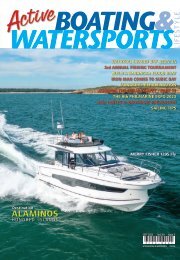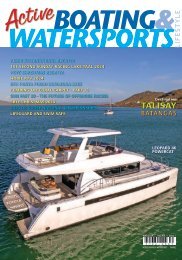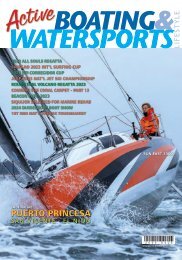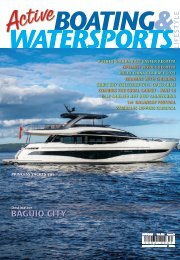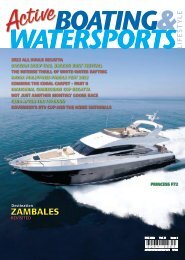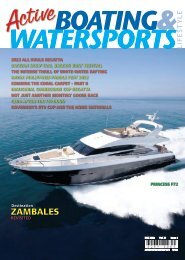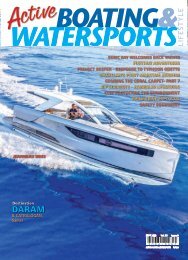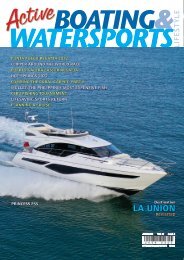You also want an ePaper? Increase the reach of your titles
YUMPU automatically turns print PDFs into web optimized ePapers that Google loves.
Sailing Tips<br />
Article<br />
excerpts reprinted from the book<br />
CRUISER HANDLING<br />
by BOB BOND & STEVE SLEIGHT<br />
You’ve always been interested to sail, but you know little about boat parts, the confusing techno-babble, and what<br />
little you know is making your head spin in four different directions! Worry no more. This continuing series of articles<br />
is for you: it covers tips regarding hardware present on most boats, as well as common sailing techniques, terms and<br />
definitions, the names of the different pieces of hardware, and much more. This will keep you informed about most<br />
things you will need before you begin your own sailing excursion. Be sure to consult with an experienced sailor and someone<br />
knowledgeable about boats.<br />
Junk rig<br />
If you are a keen cruising sailor and<br />
want to get the best performance out of<br />
your boat, it pays to have a good set of<br />
sails, properly cut and of the appropriate<br />
quality for cruising.<br />
Developments in sail-making have<br />
produced tougher and more stable<br />
clothes that hold their shape better than<br />
light.<br />
the earlier ones did, and modern sail<br />
design and construction have helped both reduce distortion<br />
and to increase sail life. Although sail cloths with a hard finish<br />
are commonly used for racing, the soft finish cloths are more<br />
suitable for cruising, the sails are easier to handle and stow,<br />
and are more durable. Some cruising skippers mistakenly try<br />
to copy the small wardrobes of racing boats. The requirements<br />
of cruising are quite different. Ease of handling, durability<br />
112<br />
Since sails are expensive,<br />
you must look after<br />
them carefully, don’t<br />
leave them rigged and<br />
uncovered– the cloth<br />
will deteriorate if left<br />
exposed to ultraviolet<br />
and versatility are the priorities of the<br />
cruising yachtsman, whereas the racing<br />
boat skipper can usually spend more,<br />
carry a larger sail wardrobe, and concern<br />
himself solely with efficiency.<br />
One of the questions that perennially<br />
crops up with cruising sailors is whether<br />
to carry a spinnaker. Although it is simple<br />
enough to use the engine when traveling<br />
downwind in light breezes, it is much more enjoyable, and<br />
cheaper, to use a special downwind sail, or, failing that, to<br />
pole out a genoa or boom out two head sails, one on either<br />
side of the boat. Although cruising skippers who sail regularly<br />
with a reasonably competent crew may find it worthwhile to<br />
invest in an all-round spinnaker, those with a less able crew<br />
may prefer a bottomless cruising chute.




